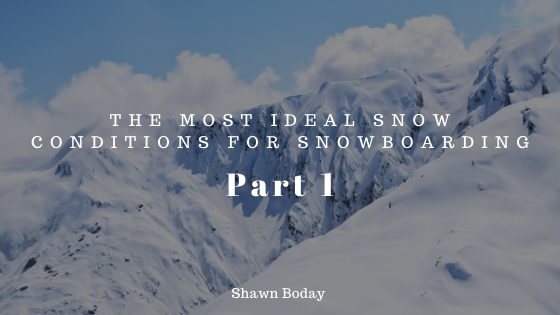A good snowboarder needs go be able to take on all types of snow conditions. Compared other sports, experience doesn’t change depending on the weather. The overall experience of snowboarding can be affected depending on the levels of snowfall.
There are some conditions that snowboarders find to be more favorable than others, but all types of snowfall have their pros and cons. Below we have outlined a few of the most common types of snow conditions and what kind of snowboarding experience you can expect.
Fresh Snow
One of the most favorite types of snow among snowboarders, no matter their skill level, is fresh snow. Fresh snow is known for providing a great day out on the mountain.
Fresh snow allows a smoother ride and provides some extra cushion in case you fall over. You’ll find that most snowboarders are eager to hit the slopes when fresh snow has fallen. In the morning, the snow has been groomed by the pitse bashers which makes it the most ideal.
Although fresh snow does have its pros, throughout the day the snow can become too soft and create an uneven slope,
Powder
After there has been some heavy snowfall, you can expect to see powder snow. Powder snow has a very low moisture content, which makes snowboarders feel like they are almost floating over the snow.
Powder snow isn’t that common on the mountain due to the grooming from the resort, but if you ride the side of the piste right after the snow, you will most likely encounter some powder snow.
Packed Powder
When powder snow becomes compressed and smoothed, it becomes packed powder. Packed powder is a desirable snow base that creates a smoothing snowboarding experience. Packed powder is ideal for those who are just learning how to snowboard or those who are looking to gain some speed without any bumps in the way.
Icy or Hard-Packed Pistes
More often than not, you will find icy and hard-packed pistes on the same day. Both icy and hard-packed powder are slippery, but hard-packed snow is a little more forgiving.
Ice and hard-packed snow form over the time as water content of snow starts to increase. Hard-packed sow or ice war up during the day, but become refrozen once the temperature drops in the night.
Hard-packed snow is easier to board on than ice. Hard-packed which is ideal for those who are look to move with speed. Ice on the other hand is quite challenging to navigate. Snowboarders need sharp edges on their boards in order to hold each turn on the ice. The other option is to just glide over the ice without incorporating many turns.
Keep an eye out for our next blog where we will look three more types of snow—slush snow, crud snow, and sticky snow.

